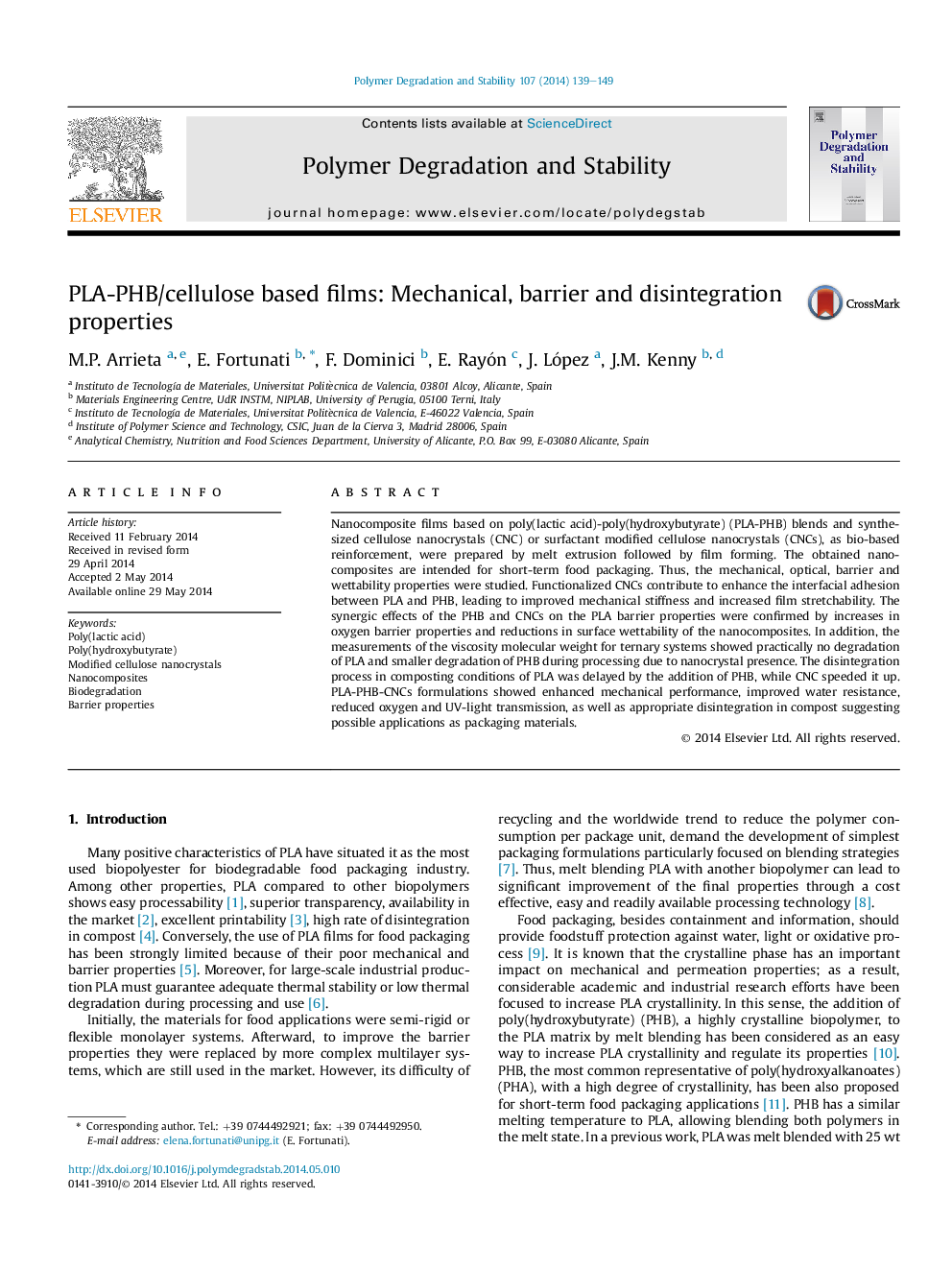| Article ID | Journal | Published Year | Pages | File Type |
|---|---|---|---|---|
| 5201830 | Polymer Degradation and Stability | 2014 | 11 Pages |
Nanocomposite films based on poly(lactic acid)-poly(hydroxybutyrate) (PLA-PHB) blends and synthesized cellulose nanocrystals (CNC) or surfactant modified cellulose nanocrystals (CNCs), as bio-based reinforcement, were prepared by melt extrusion followed by film forming. The obtained nanocomposites are intended for short-term food packaging. Thus, the mechanical, optical, barrier and wettability properties were studied. Functionalized CNCs contribute to enhance the interfacial adhesion between PLA and PHB, leading to improved mechanical stiffness and increased film stretchability. The synergic effects of the PHB and CNCs on the PLA barrier properties were confirmed by increases in oxygen barrier properties and reductions in surface wettability of the nanocomposites. In addition, the measurements of the viscosity molecular weight for ternary systems showed practically no degradation of PLA and smaller degradation of PHB during processing due to nanocrystal presence. The disintegration process in composting conditions of PLA was delayed by the addition of PHB, while CNC speeded it up. PLA-PHB-CNCs formulations showed enhanced mechanical performance, improved water resistance, reduced oxygen and UV-light transmission, as well as appropriate disintegration in compost suggesting possible applications as packaging materials.
